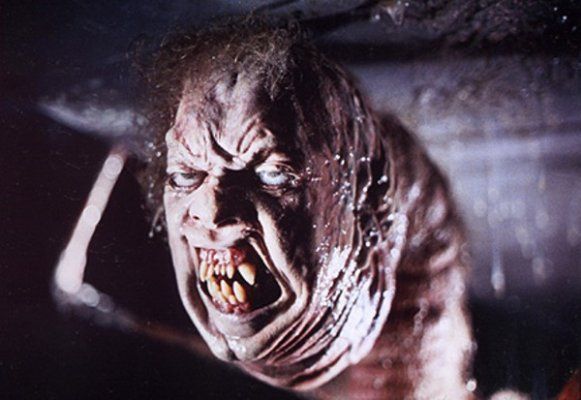
The highest-grossing films of the modern era are often most well known for their spectacular CGI effects, which have become considerably more advanced in recent years.
Before that, however, moviemakers relied on practical effects for their monsters and ghouls, and it proved to be a resounding success for more than half a century.
Find out which films had the best practical effects of all time.
1. The Thing (1982)
In what is undoubtedly one of the greatest films of horror-legend John Carpenter, R.J. MacReady leads a 12-man study squad against a shape-shifting alien trapped in the ice for 100,000 years in Antarctica.
By assuming the shape of a dog, the creature infiltrates the facility, and one by one, it starts consuming the team members. The constant suspense in the film is significantly increased when each member of the squad becomes suspicious of each other, culminating in a blood test to see who is the real entity and who’s still human.
Without the skill of special effects designer Rob Bottin, Carpenter’s masterpiece of paranoia would not have been feasible. Bottin is directly accountable for scaring the many millions of viewers since the film was first released 1982, and much of the film’s legacy can still be found in modern cinema. Although the film has too many effects to explore in detail— the creature consuming the dogs, the blood test scene, and the “Blair Monster,” few stand out quite as much as the climactic finale.

2. 2001: A Space Odyssey (1968)
This 1968 masterpiece from Stanley Kubrick is widely regarded as one of the greatest science fiction films ever made, if not one of the greatest movies of all time.
The film is a truly amazing experience that brings the viewer on a trip from the Dawn of Man to the next level of human evolution by the time the movie comes to a close, represented by the birth of the “star kid.”
Kubrick’s space opera is much more about the graphics than the narrative. The film has two and a half hours operating time, in which there is only about 45 minutes of real dialogue spoken. It remains a film that has influenced so much of modern entertainment, ranging from television to bingo Canada games.
For his job on the visual effects of the film, Kubrick received the only Oscar of his career. The impact of Kubrick’s magnum opus created an entirely new level of quality for future films to aspire to.
3. Jaws (1975)
Jaws remains the ultimate summer blockbuster, even to this day. It’s the film that terrified an entire generation of moviegoers and left them too scared to go into the water, even 40 years on. It remains a landmark film in the genre of suspense as well as a piece of film history.
As any Jaws enthusiast will know, a mechanical shark was used to portray the giant Great White that was eating swimmers and visitors off Amity Island’s shore. The shark, which the crew called “Bruce,” was notorious for breaking down almost constantly.
The shark’s frequent inability to function correctly was what allowed Spielberg to create a much more efficient film; where he was forced to display it less, thus concentrating more on the growth of story and characters throughout the first part of the film.
